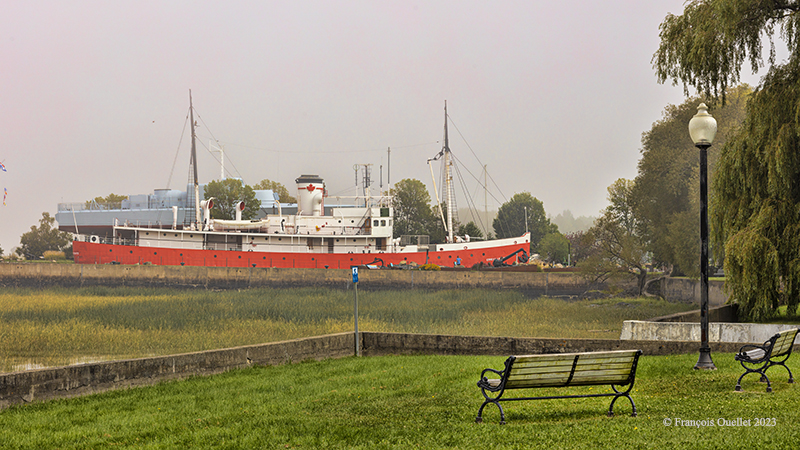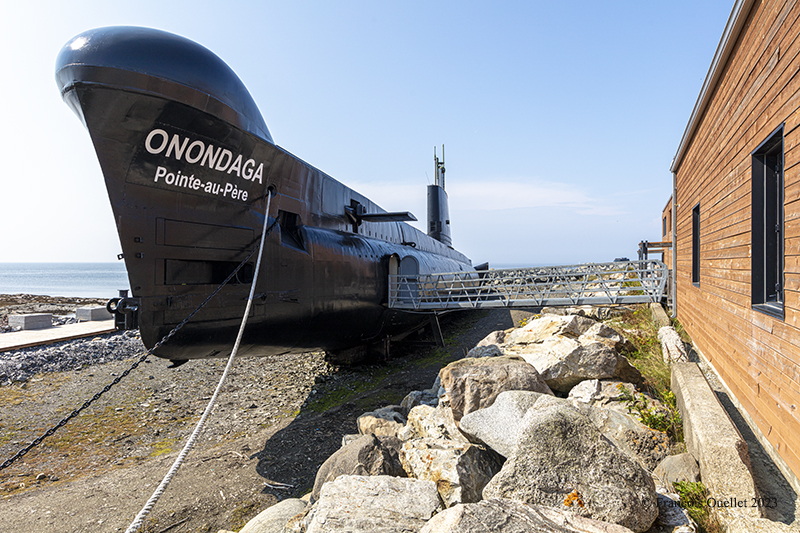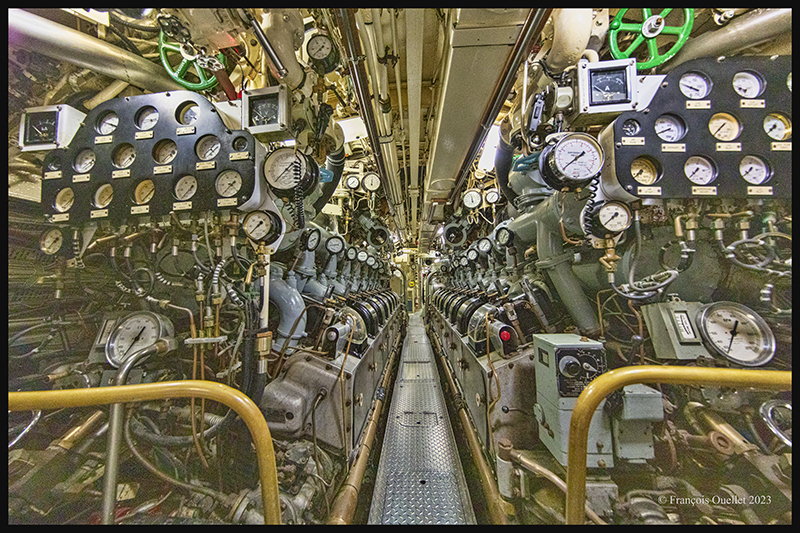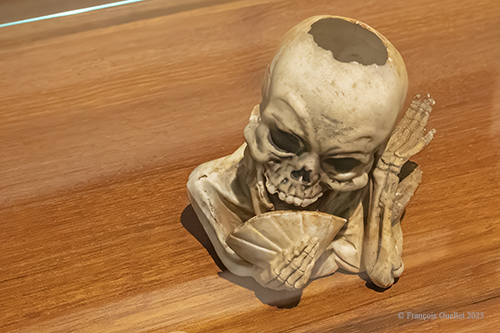
While in L’Islet, a stop at the Musée maritime du Québec is a must. Above, the icebreaker Ernest Lapointe, responsible for clearing the St. Lawrence River between Montreal and Trois-Rivières for 37 years.

Also on the grounds is the famous HMCS Bras d’Or. This hydrofoil was created in Canada during the Cold War to monitor Canadian waters against possible Soviet submarine intrusion. As this museum boat explains, “it was compulsory to have a dual pilot’s licence for aircraft and navigation in order to operate this self-supporting winged craft“.

A little further east, we reach Pointe-au-Père, in the Rimouski region. Here you’ll find Canada’s only submarine museum.Visitors can tour the interior of the HMCS Onondaga, used until 2000. Travelers pass through 17 stations to learn about life aboard a submersible.

The mechanic worked for periods of two months at a time, monitoring the engines in this noisy, diesel-smelling environment. A German spy disembarking from a submarine at night in Gaspésie was spotted in a bus because it smelled strongly of diesel.

Above, a shot of one of the rooms in the Museum of the Empress of Ireland. Her sinking in the St. Lawrence River was the second most costly in human lives after the Titanic. Among all the objects recovered from the wreck is this porcelain skeleton that one of the passengers had in his cabin.

Click on the link for more photos from the province of Quebec on my blog.